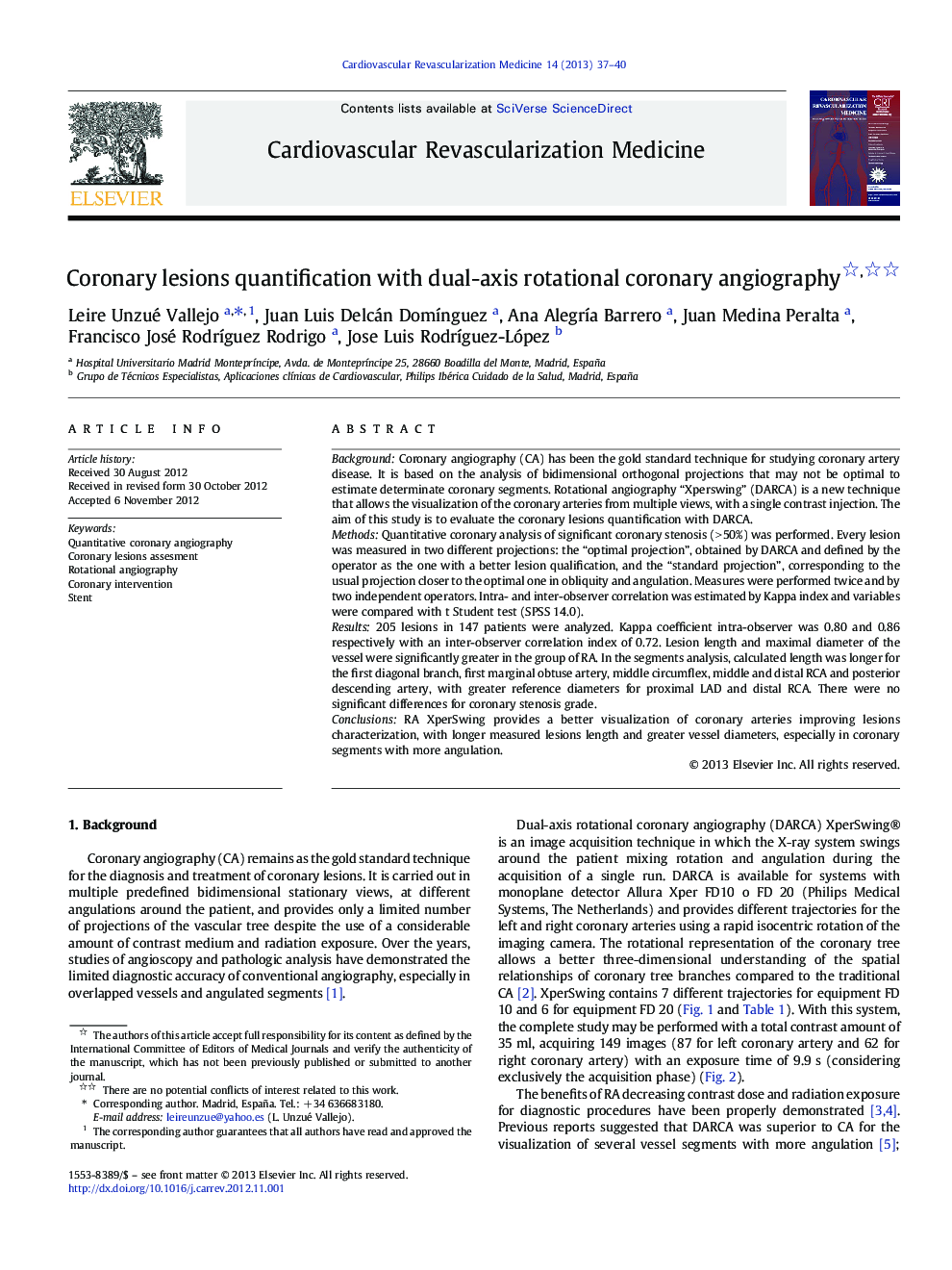| Article ID | Journal | Published Year | Pages | File Type |
|---|---|---|---|---|
| 2837063 | Cardiovascular Revascularization Medicine | 2013 | 4 Pages |
BackgroundCoronary angiography (CA) has been the gold standard technique for studying coronary artery disease. It is based on the analysis of bidimensional orthogonal projections that may not be optimal to estimate determinate coronary segments. Rotational angiography “Xperswing” (DARCA) is a new technique that allows the visualization of the coronary arteries from multiple views, with a single contrast injection. The aim of this study is to evaluate the coronary lesions quantification with DARCA.MethodsQuantitative coronary analysis of significant coronary stenosis (> 50%) was performed. Every lesion was measured in two different projections: the “optimal projection”, obtained by DARCA and defined by the operator as the one with a better lesion qualification, and the “standard projection”, corresponding to the usual projection closer to the optimal one in obliquity and angulation. Measures were performed twice and by two independent operators. Intra- and inter-observer correlation was estimated by Kappa index and variables were compared with t Student test (SPSS 14.0).Results205 lesions in 147 patients were analyzed. Kappa coefficient intra-observer was 0.80 and 0.86 respectively with an inter-observer correlation index of 0.72. Lesion length and maximal diameter of the vessel were significantly greater in the group of RA. In the segments analysis, calculated length was longer for the first diagonal branch, first marginal obtuse artery, middle circumflex, middle and distal RCA and posterior descending artery, with greater reference diameters for proximal LAD and distal RCA. There were no significant differences for coronary stenosis grade.ConclusionsRA XperSwing provides a better visualization of coronary arteries improving lesions characterization, with longer measured lesions length and greater vessel diameters, especially in coronary segments with more angulation.
